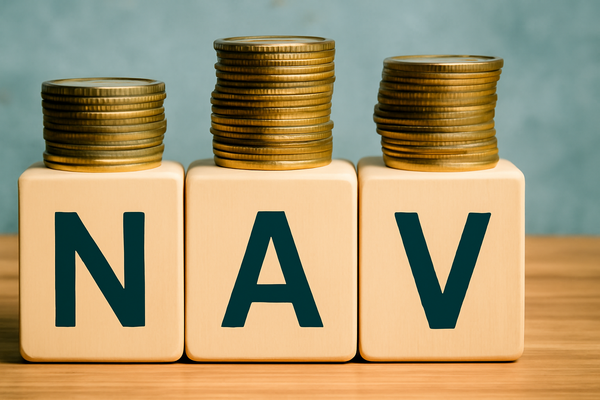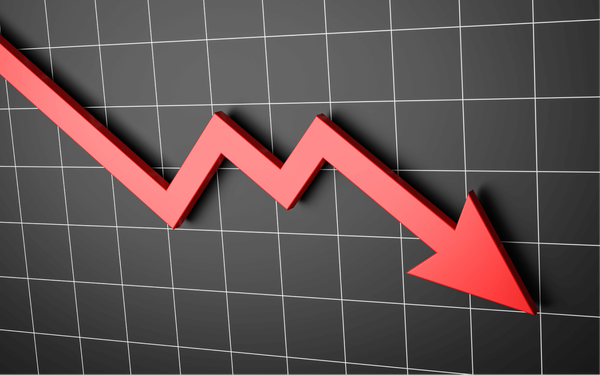What is EBITDA?
Learn how to use EBITDA to assess profitability, compare companies, and make smarter share market moves for better investment decisions.

Before diving into complex balance sheets or earnings reports, investors often look for a clear snapshot of a company’s performance. That’s where certain financial metrics come into play — tools that strip away the noise and reveal how well a business is truly operating. One such metric that stands out, both for its simplicity and its insight, is EBITDA.
EBITDA is a popular term you’ll often hear in stock market discussions. It stands for Earnings Before Interest, Taxes, Depreciation, and Amortisation — quite a mouthful, but simply put, it’s a way to measure how much money a company makes from its core business before certain costs are taken out. Investors use it to get a clearer picture of how well a company is actually performing. If you’ve ever wondered, “What exactly is EBITDA and why does it matter?” — let’s break it down and see why it’s such an important number in the share market.
Understanding EBITDA
EBITDA looks at a company’s performance by focusing only on its core business operations. It ignores outside factors like interest payments or taxes, which can make profits look bigger or smaller than they really are. That’s why it’s sometimes used as an alternative to net revenue.
In simple terms, it’s about understanding a company’s true earning power by removing costs it can’t directly control — like loan repayments, depreciation, taxes, and interest. This makes it easier to compare companies of different sizes in the same industry on a fair basis.
Here’s the basic formula:
EBITDA = Net Profit + Taxes + Interest + Depreciation + Amortisation
Another way to calculate it is:
EBITDA = Operating Income + Depreciation + Amortisation
When it comes to the EBITDA margin, a figure of 15–20% or higher is generally considered strong, though it can vary by sector.
Here are some key aspects of EBITDA:
Why it matters to investors?
Now that you know what EBITDA means in the share market, let’s see why it’s such a big deal for investors.
Measures core business performance
EBITDA shows how well a company is doing in its day-to-day business by focusing only on operational earnings. It leaves out things like taxes, interest, depreciation, and amortisation—factors that can make profits look better or worse depending on external conditions. By stripping away these non-operating costs, investors get a clearer picture of how efficiently a company makes money from its core activities.
Makes company comparisons easier
Because it removes the effects of taxes and interest, EBITDA is great for comparing companies across industries and geographies. Whether one company runs heavy machinery with high depreciation costs or another has minimal assets, EBITDA helps you compare them on the same playing field.
Works as a valuation tool
EBITDA is often used in ratios like EV/EBITDA (Enterprise Value to EBITDA) to assess if a stock is undervalued or overvalued. A lower ratio may suggest a bargain, while a higher one could mean the stock is expensive relative to its earnings power.
Estimates cash generation potential
EBITDA also gives investors a sense of how much cash a company generates from its core business before making big purchases or investments. A healthy, consistent EBITDA often means the business can reinvest in growth and comfortably meet its financial obligations.
Helps analyse debt capacity
Through metrics like the debt-to-EBITDA ratio, investors can gauge how many years it would take for a company to repay its debt from operational earnings alone. A lower ratio usually signals stronger financial health.
How it helps in the share market?
EBITDA isn’t just a number on a company’s financial statement — it’s a versatile tool that can help investors and lenders make smarter decisions. Here’s how it comes into play:
Analyses debt and credit strength
Banks, lenders, and investors often look at EBITDA to see if a company can comfortably manage its debt. Ratios like Debt-to-EBITDA show how many years it might take to pay off that debt using operational earnings — a quick check on financial stability.
Simplifies investment choices
By focusing only on core profitability, EBITDA makes it easier to judge a company’s true earning power. This is especially useful in cash-heavy industries like manufacturing or telecom. If you’re new to investing, pairing this insight with a diversified portfolio can help lower your risk.
Helps pick strong stocks
Want to know if a company is both efficient and financially healthy? The EBITDA-to-interest coverage ratio can reveal whether it’s able to handle debt while running a lean, profitable operation. Since it filters out factors a company can’t control, EBITDA often gives a cleaner picture than other metrics.
Indicates growth potential
When a company’s EBITDA keeps rising year after year, it’s usually a sign of good cost control and strong demand — both great indicators for future growth. Investors often track this trend to spot companies that can scale without losing efficiency.
Shows organisational efficiency
If buyers are considering investing in or acquiring shares, EBITDA is one of the first numbers they check. It strips away taxes, interest, and other costs, showing the pure profitability of the core business — a key measure of operational success.
Wrapping up
EBITDA is one of the most widely used measures in the share market because it focuses on a company’s core operating profitability. It makes comparing companies within the same industry easier, regardless of their tax structure or capital setup. But while it’s a valuable metric, relying on it alone isn’t enough. Pairing EBITDA with other financial indicators gives a fuller picture of a company’s true financial health. For shareholders, it’s a quick way to gauge organisational efficiency, revenue strength, and overall performance — helping them make more confident investment decisions.




